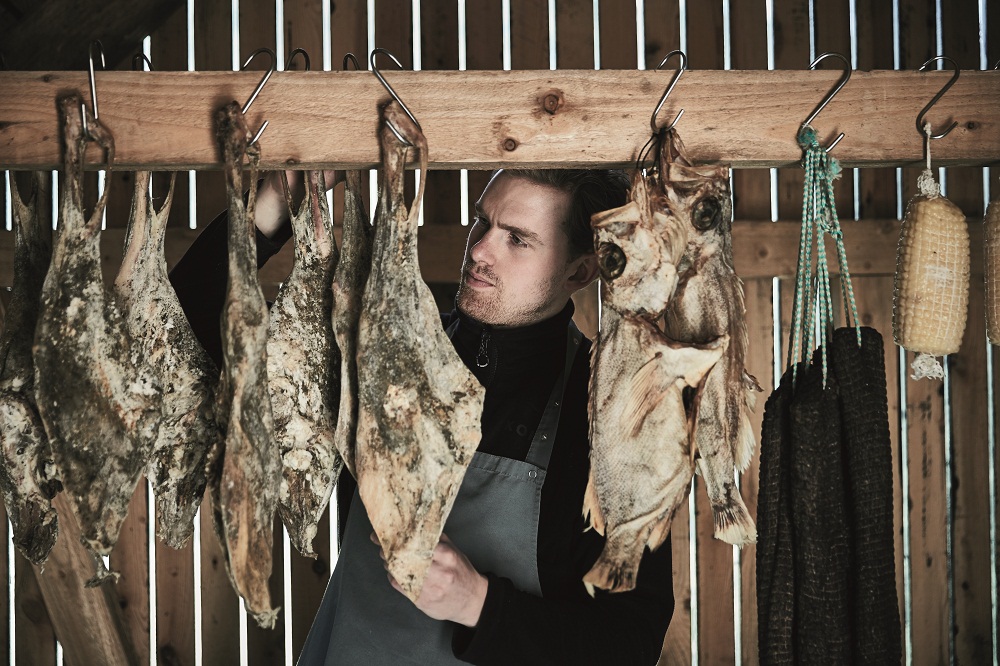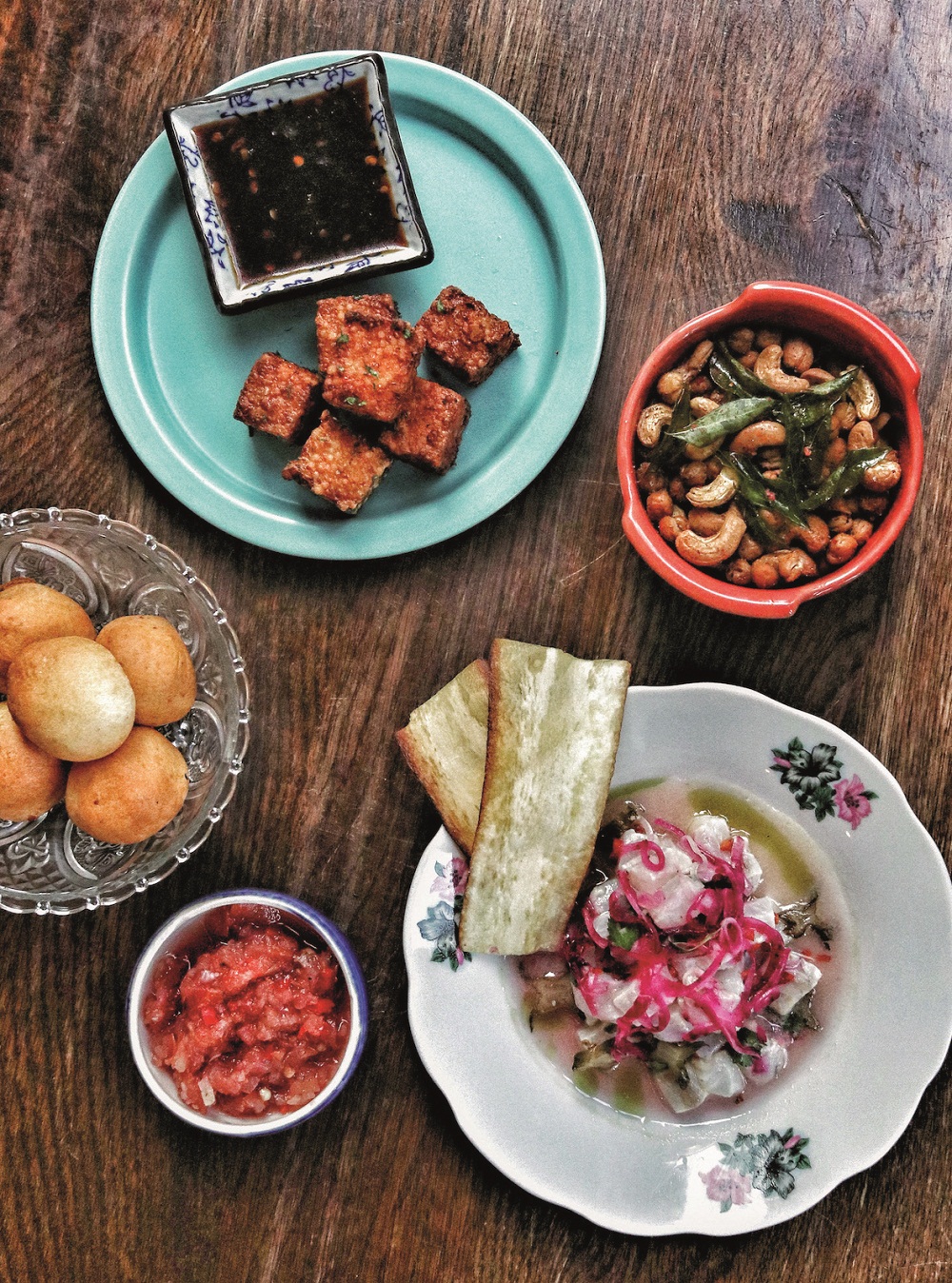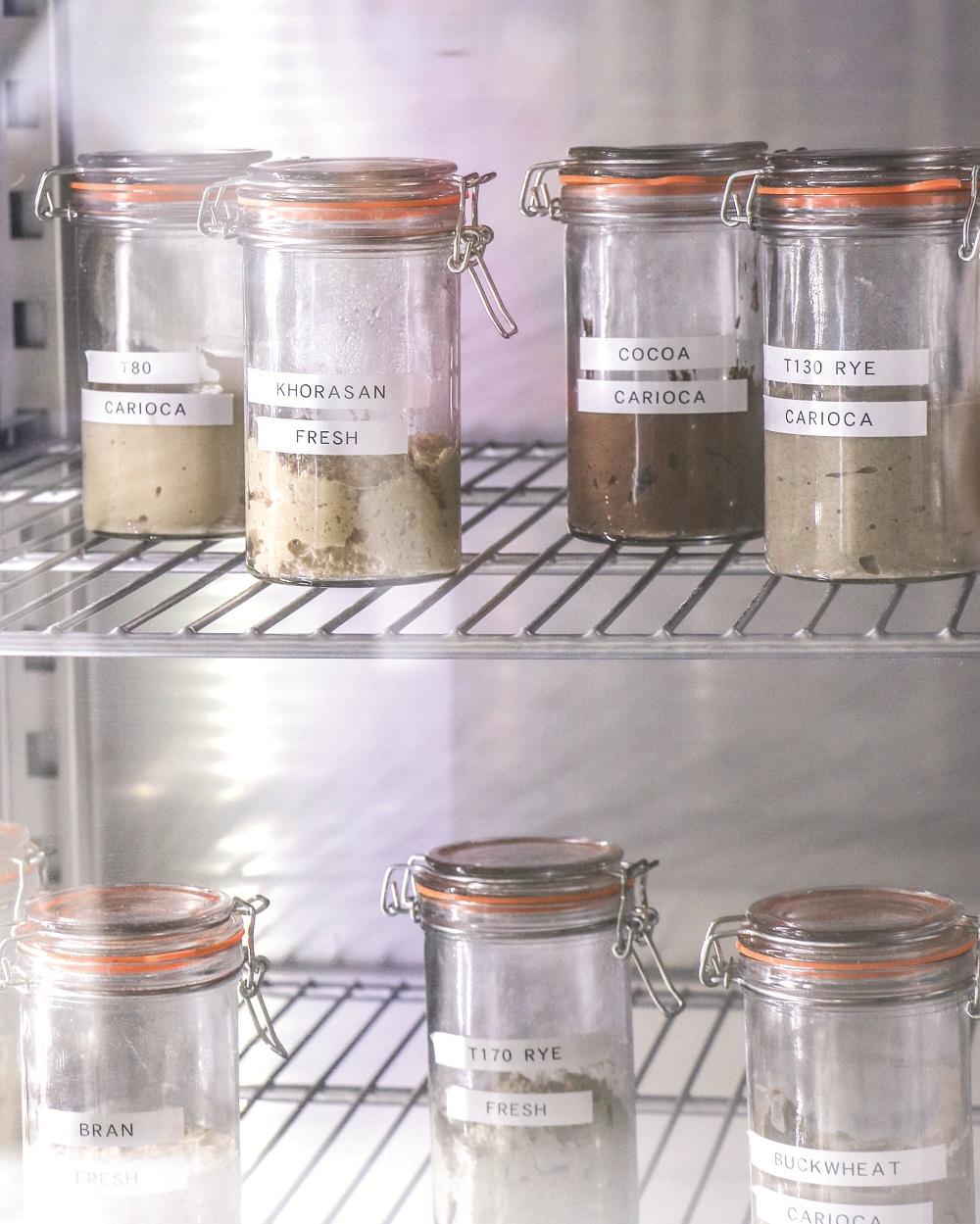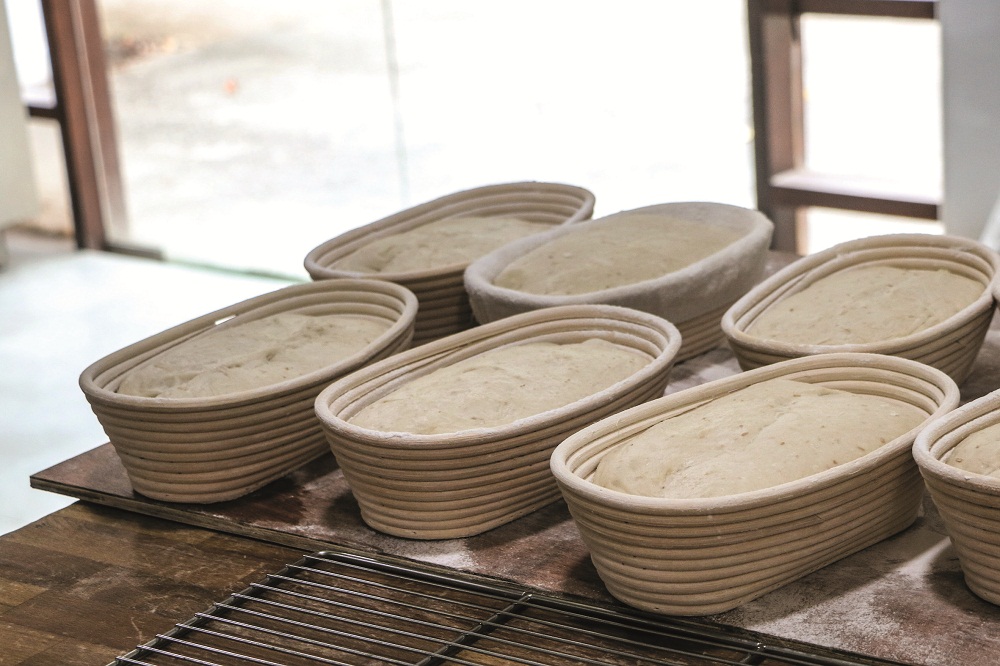Fermentation, perhaps the oldest biotech process, has been around for millennia, giving longer shelf life to fresh produce and preventing foods from spoiling. But it is only now that we are learning to appreciate the health benefits that come with fermented foods.

“Fermentation is the future of cooking,” declares chef-patron René Redzepi of three-Michelinstarred Noma and four-time winner of The World’s 50 Best Restaurants award in his cookbook The Noma Guide to Fermentation. Here, Redzepi and coauthor David Zilber (Noma’s fermentation lab head) spotlight Noma-inspired ferments such as koji, misos and black fruits versus better known ferments like sauerkraut. Redzepi has long been heralded for his foraging and fermenting techniques, and even has his own fermentation lab for the restaurant. He likens the process to Lego where the more ferments you have, the more flavours you can build, which makes cooking much easier.
FERMENTED FOODS ARE HEALTHY
So when an award-winning chef like Redzepi believes in fermentation to the extent that it is the restaurant’s main pillar (there isn’t a single menu or dish at Noma that isn’t fermented in some way), we can’t help but want to deep-dive into it. We already know that our digestive tract is home to approximately 100 trillion bacteria and other microorganisms, which is why gut health is central to our overall well-being (see our feature on gut health in our Feb/ Mar 22 issue).
That’s where fermented foods come in – research has shown they have excellent health benefits, thanks to the presence of gut-friendly bacteria called probiotics. These good, live microbes thrive in fermented products such as yogurt, kimchi, pickles, sauerkraut and fermented soybeans (think natto, tempeh and miso). Unfortunately, our diets have changed dramatically in modern times due to the increased amount of processed foods we consume, and because (ironically) of the “clean” produce grocery stores carry which have less bacteria on it. This drastically reduces the number of microbes people would be exposed to naturally through dirt and other contaminants. In addition, our increased use of antibiotics kill off beneficial organisms along with the bad ones, thus negatively altering the gut microbiome.

Research increasingly shows that a diverse and healthy intestinal microbiome (the gut’s microbial community) is critical to good health. Fermented foods can bolster the gut microbiome, creating a healthier mix of microbes in the digestive tract, boosting our immune system and purportedly strengthening the walls of the intestines to keep them from leaking (a condition known as “leaky gut syndrome”).
A CHEF’S PLAYGROUND
But not all fermented foods are created equal, and it’s because of the difference in live microbes present in each food. For instance, kefir, yoghurt and cheese are all dairy products produced by fermentation, but yoghurt has far more live bacteria than cheese, and kefir tops that of even yoghurt.
Still, fermentation is a valued technique that people should continue to explore. Tippling Club’s head chef Ayo Adeyemi explains, “Fermentation is an ancient preservation technique that has been used over thousands of years in nearly all cultures and cuisines around the world. It has contributed to so many staple ingredients that are used in everyday cooking in today’s society, including soy sauce, miso and sourdough. Besides its vast nutritional benefits, fermentation is a great way to keep foods from spoiling, allowing chefs to have an innovative and experimental platform on how to use foods that would have been disregarded otherwise. People don’t realise that fermentation is used in so many food commodities such as coffee, cheese and chocolate production, and that it can easily be done at home.”
.jpeg)
Ancient indeed! At Tiong Bahru Bakery, chef de cuisine Paul Albert uses a 160-year old sourdough starter for his large variety of sourdough breads and pizzas. Over at The Butcher’s Wife, head chef Mariana Campos reveals she is obsessed with fermentation because of the way it magically transforms an ingredient into something totally different. “Not only is it an effective form of food preservation, fermented foods boost the good bacteria in your stomach, promote good gut health, improve digestion and immunity while resulting in many amazing and interesting arrays of flavours and texture,” she says.

A CONTINUOUS SUPPLY OF FOOD
In colder northern climates, fermenting food has allowed people to have vegetables and fibre throughout the long winter months when they otherwise wouldn’t be available. For instance, while fresh cabbage has a very short shelf life, fermented sauerkraut or kimchi last for months. So it’s not hard to understand Redzepi’s obsession with fermentation, given Denmark’s long winters. Furthermore, fermentation can make food more nutritious and ups the vitamin B12 levels in fermented vegetables, which is normally not present in plant foods.
Fermented meat perhaps? Raw fermented lamb atop crispy fried reindeer lichen, with a mushroom and pickled berry emulsion is just one of the signature dishes at two Michelin-starred KOKS in the Faroe Islands, helmed by executive chef Poul Andrias Ziska. Like Redzepi, Ziska is another great believer in fermentation. He is famous for serving new Nordic cuisine using the finest sustainably sourced Faroese produce, created through the ancient practices of drying, salting, smoking, and above all, fermenting. Their uniqueness, says Ziska, comes from these traditional techniques which are very important to their identity.
Central to the Faroese fermentation is the practice of ræst, a form of wind-powered dryaging, akin to a combination of fermentation and ageing. Some of the restaurant’s signatures include fermented ocean perch with fermented lamb intestines and cheese, and cod filet with fermented cabbage and caviar. To ferment the meat, joints of freshly butchered lamb are hung in a hjallur or wooden shed, chinked with drafty gaps to allow the islands’ incessant winds to blow through it, culminating in a much sought-after layer of green mould on the meat that comes with time and wind.
.jpeg)
Meanwhile, chef-owner Drew Nocente of Salted & Hung uses fermentation in a couple of ways to make fish garum, kombucha and pickles since it is a great method to extract unique flavours for his dishes. It is also one of the avenues in which the restaurant achieves its zero waste philosophy by maximising an ingredient’s potential. “Most people think that fermentation is a lot more complicated than it really is. It’s a fun activity which can be done at home and perhaps as a family bonding experience. Start the basics with just a few staple ingredients such as salt, vinegar, whey and spices. Almost all vegetables can be fermented,” says Nocente.
CREATIVE FERMENTING
To tackle the lack of Singapore’s seasonality, Adeyemi uses lacto-fermentation (fermentation that occurs with the lactobacillus bacteria) with seasonal fruits and vegetables such as red cherries, Mirabelle plums and cordyceps in his menu at Tippling Club. “We frequently use a fermented rice bran paste that’s commonly used in Japan for pickling vegetables. The practice of using large cedar tubs filled with this paste or sake lees (a byproduct of the sake brewing process) with vegetables buried inside is common practice in Japanese homes for adding flavour to vegetables and giving them a pickle-like sensation – perfect for soup and rice accompaniments.”
For their vegetarian Carrot Tartare Tartlet snack option, instead of using wagyu, Adeyemi buries the Normandy carrots in fermented rice bran paste for five days to ferment, as part of an elaborate process to mimic the meaty texture of wagyu. “The resulting flavour profile has a meaty texture, but with a pleasant salty acidity and slight sharpness,” he says.
He also uses the umami-boosting shio koji (a Japanese marinade made by fermenting koji grains) as a way for marinating meats, particularly the Australian Black (Angus) Onyx Striploin. “Marinating the whole cut with shio koji for 24 hours gives it similar properties to dry ageing, where the enzymes from the koji convert the meat protein to amino acids while maturing the flavour and texture of the beef.” As the starch from the koji has been converted to sugars during fermentation, the resulting natural sugars add sweet, caramelised notes to the roasted beef. “Our signature Purple Garlic Soup is also seasoned only with shio koji paste for a richer depth in flavour which cannot be achieved with salt,” he adds.

At Tiong Bahru Bakery, Albert explains that fermentation is an on-going process – it is “alive” – so results can vary each time. He adds, “I am especially fascinated by the process of sourdough fermentation. It is amazing how basic ingredients such as flour, water and natural yeast work together to grow and produce something that is not only delicious, but also amazing for gut health. The artisanal craft of ancient sourdough making is one of the oldest and most natural methods of bread making that doesn’t rely on any man-made chemicals.”
“Sourdough breads are more digestible as the fermentation process leads to an increase in pre- and probiotics, resulting in better gut health. Mass-produced breads can contain a number of chemicals, preservatives and bleaching agents, with one dimensional flavours. Sourdough breads have a lower glycemic index compared to other breads, and helps with gluten digestion.“
Campos at The Butcher’s Wife similarly applies fermentation in a large number of ways because such foods are able to inject interesting textures and flavours. “When people think of fermented foods, they think about pickles, especially as a garnish or palate cleanser,” she says. “On our menu, we offer a wide array of vegetable pickles such as white kimchi, pickled root vegetables, cucumbers, chayote and chilies while applying fermentation techniques to lesser known ingredients too.” She ferments her own goat’s cheese; chickpeas for chickpea toast; cultured cashew creams; fermented black beans for falafels; and incorporates miso in desserts. She is already famous for her house-made kombucha.
“Fermentation is also the perfect way to reduce food waste as we can use off-cuts and trimmings, and prolong the lifespan of each ingredient,” she adds.